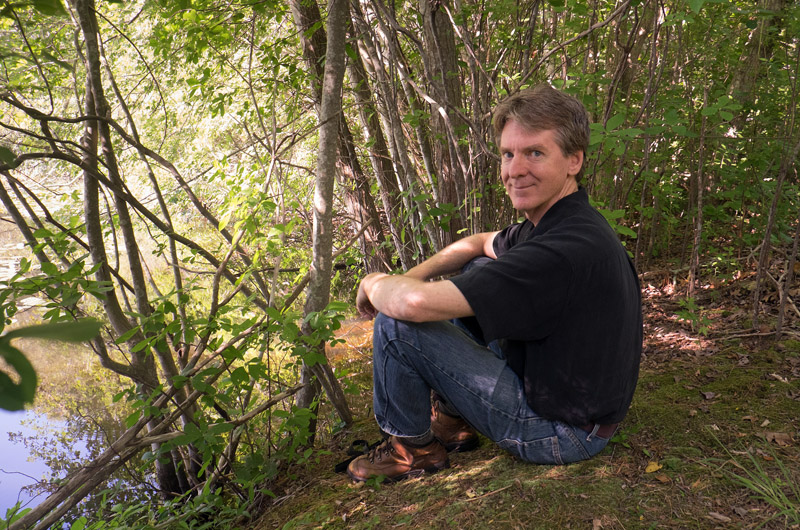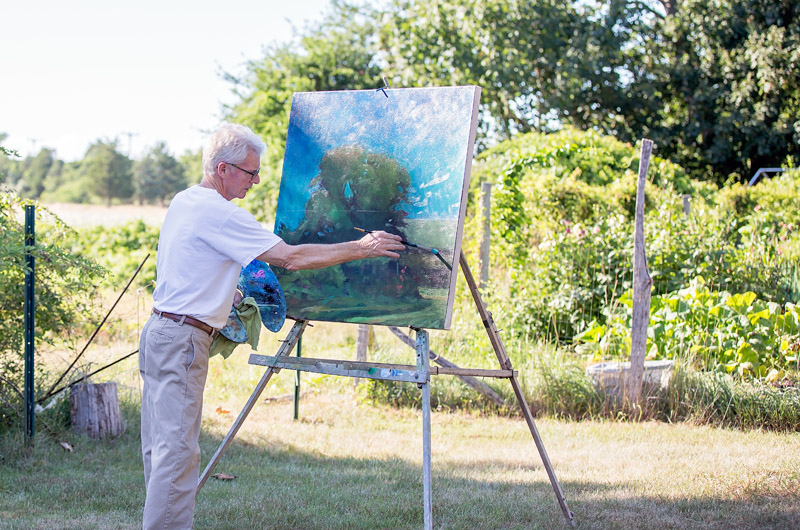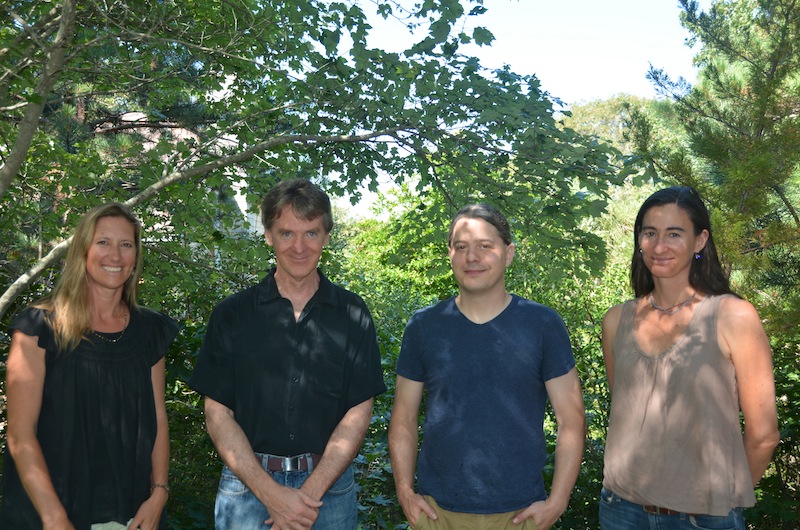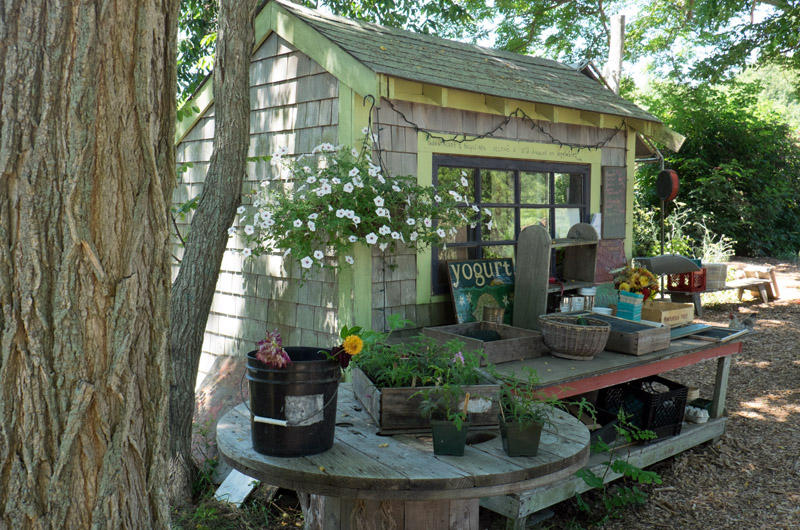In June 1965, a group of conservationists con cerned about development on the Lobsterville moors in what was then Gay Head, sent out letters to seasonal and year-round residents alike asking them to join the fight “to preserve the natural beauty of Martha’s Vineyard.”
“Friends of the Island seeking 80 to 100 founding members to deter dubious ‘progress,’ ” the Gazette reported at the time.

Fifty years later, the Vineyard Conservation Society endures, its mission unchanged.
“We’ve kept our focus on the simple purpose for which the organization was created in 1965, to protect Island character and natural beauty,” explained Brendan O’Neill, longtime executive director of VCS. “And that is such a broad mandate, that it’s been easy finding ways to promote that.”
The conservation society has been celebrating its half century of work this summer with a series of events.
Conservation restrictions have been a key element of the work by VCS through the years. Today the society holds 19 conservation restrictions protecting 800 acres of land, and has assisted in several more beyond that.
One of the earliest projects VCS worked on was Katama Farm in Edgartown. In 1978, the farmland, which lies in the rare Great Plains section of Katama, was being eyed for development. VCS joined forces with the state and the town in the fight to keep the land open and in agricultural use. Today the property is owned by the town, preserved in perpetuity and leased to the Farm Institute which is in the process of forming an owner partnership with The Trustees of Reservations.
The preservation of farmland on the Vineyard is one small but important chapter of the conservation story through the decades.
“When I grew up, I felt like we lived in an agricultural community that toyed with suburbia once in awhile,” said Allen Whiting, the iconic West Tisbury artist and plein air landscape painter. “Now we kind of live in a suburb that we have to step out of to go do your farm work in a way.”
In 1984, with help from VCS, the Whiting family sold the development rights on their farm to the state, and an agricultural preservation restriction was placed on 55 acres of the farmland. Those acres will always be used as farmland, and are one of Mr. Whiting’s favorite places to paint. He recently painted the Moshup Trail heathlands to be sold at auction for the conservation society’s 50th birthday party on Wednesday night this week.
“I think that we’re a finite space here and I think it’s important,” Mr. Whiting continued, standing at his easel and dabbing highlights onto a piece he started the day before. “We’re almost a lab experiment about how to coexist with the land and I think that keeping open spaces is really important for humans.”
Mr. Whiting grew up on the Island and the popularity of the Vineyard contributed to interest in his paintings, he said, but it also encroached on the landscapes he loved to paint.
“We may be God’s children, but we are quite capable of making a mess of things,” the artist and farmer said. “This is just one of the many things we have to deal with whether it’s trash, population, the ozone layer or war, having some open space is good for people to not feel afraid when they walk around and feel comforted by it. I think it’s important.”
In an interview at the Wakeman Center in Vineyard Haven early this week, Mr. O’Neill reflected.
“[The beginning of VCS] was at a time when new house development was happening at the rate of one new house a day, 365 days a year, for many, many years,” he said. “So the Vineyard was changing rapidly and VCS was seeking to advance our mission of protecting the character of this place.”
One of the first efforts was to advocate for the creation of zoning laws on the Island.
As reported in the 50th year newsletter, Bruce Blackwell, the first executive director, said: “There wasn’t zoning in Martha’s Vineyard, with the exception of, I think it was Chappaquiddick, strangely enough. Zoning was not really openly discussed because it was such a bad word on the Island.”

There was a fierce commitment among the early members of the society. The newsletter recounts how cofounder Richard Pough said: “I was by that point so deeply into preserving land that anyplace I went I wanted to preserve everything that wasn’t spoiled.” In 1981 Henry Beetle Hough addressed the annual meeting by reminiscing about an Island lost: “Of course I like to recall the old Island, the one that time and progress have outdistanced. The old ways disappeared slowly and became part of an Island heritage belonging to many who never knew them, but lived in the warm twilight of stories.”
The organization constantly pushed ahead.
“We were joking about the fact that we’re five decades into this, surely that must indicate that there was a need for an organization like ours, doing monitoring and advocacy and playing a watchdog role,” said Mr. O’Neill. “We fully expect our successors 50 years from now to say the need only grew greater, and will themselves be looking to a half-century hence where the challenges will continue.”
The first VCS office was in Bob Woodruff’s barn. “Probably with two head of oxen, two horses, two cats, one dog and two kids,” Mr. Woodruff said in the anniversary newsletter. “Used to say, Vineyard Conservation Society, how may I help you? And in the background, Moooo . . . .”
Today VCS is housed in the Wakeman Center, a leafy setting off Lambert’s Cove Road with tiered ponds that lead to a cranberry bog. There, VCS shares space with other conservation organizations, a nod to the collaborative work that was the vision of the late Mary Wakeman, an ardent Vineyard conservationist who gave money for the center. VCS works with the land bank, the state, different boards, environmental groups on a revolving list of issues.
“It’s interesting how the environmental issues we focus on sometimes move in cycles,” Mr. O’Neill said, seated at a picnic table down a trail from the center. “And as we move out of a lot of land use confrontation, we move back to a lot of environmental education around sustainability and self-reliance issues.”
One new initiative involves kids, educating a new generation of “environmentally literate youth,” he said.

Since the 1970s, VCS has been at the forefront of advocating for recycling on Island. Work is under way to explore a plastic bag ban this fall, and possibly bring it before annual town meetings towns in the spring.
“Other communities have moved in this direction of eliminating those shopping bags from the waste stream by regulation and urging people to do what I think many Vineyarders do, bring a canvas reusable tote with you to the market,” Mr. O’Neill said. “It’s part of a broader materials recycling push that we focused on in recent years that has included recycling of our shrink wrap on boats, which generates a tremendous amount of waste, and working with shipyards to move that white plastic shrink wrap off Island for recycling.”
While starting new initiatives, VCS will also be continuing old battles in its 50th year. One involves a long-running legal battle over the globally-rare coastal heathlands off Moshup Trail in Aquinnah. More than 90 per cent of these heathlands have been lost worldwide, Mr. O’Neill said. This year, a key case in the dispute will be heard by the Massachusetts Supreme Judicial Court.
“One of the big challenges we see for the future is securing or ensuring conservation gains made to date aren’t reversed,” Mr. O’Neill said. On Moshup Trail, he said “Through partnerships with other organizations, through grants, through gifts from landowners from bequests and wills, we have compiled more than 40 acres of this important habitat at the cost of nearly $3 million private and public dollars. Today we’re involved in challenges from individuals seeking to develop land nearby by accessing it through the conservation land — we feel it is our obligation to ensure those conservation gains are not set back.”
And while the half-century point marks a moment to look back and look forward, it will not be marked by huge change, Mr. O’Neill said.
“We want to do more of what we do and do it better,” he concluded.








Comments
Comment policy »